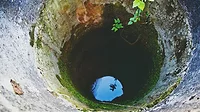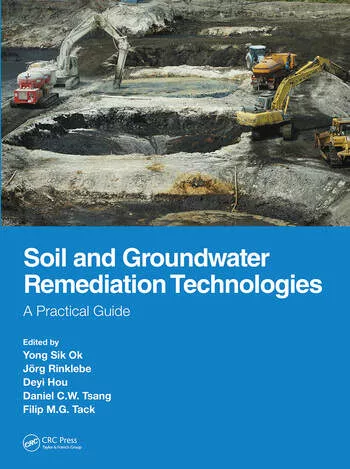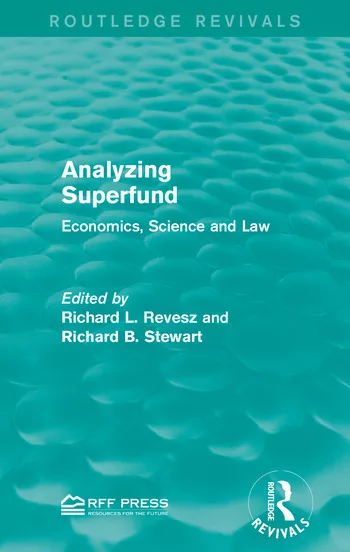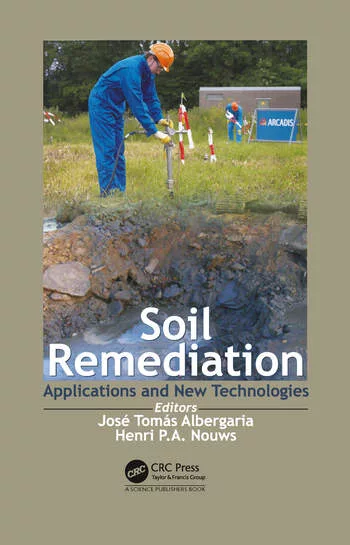Study Shines a Light on PFAS Contamination 'Layers'
Military's rushed transition away from toxic firefighting chemicals faces hidden contamination challenge, new study warns

Study comes as the U.S. DoD prepares to demonstrates soil treatment and PFAS destruction technologies from 10 companies in May 2025. (U.S. Air Force photo by Staff Sgt. Siuta B. Ika)
The Department of Defense's push to eliminate toxic PFAS chemicals from firefighting systems faces an unexpected obstacle: the chemicals themselves refuse to leave. According to the DoD, despite receiving an extension to October 2025, military installations continue to grapple with the complex challenge of cleaning contaminated infrastructure.
"It's similar to trying to clean bacon grease from a frying pan – you can't just run water over it and expect it to come off," explained Dr. Johnsie Lang, co-author of a new study published in the National Ground Water Association Journals. "These chemicals create persistent layers that require specific cleaning approaches to remove."
The study's timing is critical as the Defense Innovation Unit (DIU) prepares to demonstrate several PFAS destruction technologies in May 2025, including solutions from Aquagga, Arcadis in conjunction with 374Water, Battelle, and General Atomics. These trials come as military installations nationwide face the daunting task of not just replacing foam stocks, but ensuring decades of accumulated PFAS contamination doesn't compromise new systems.
The Science Behind the Sticky Problem
According to Lang's research team, PFAS compounds in firefighting foam create unique challenges due to their molecular structure. "These chemicals have a long hydrophobic tail and a hydrophilic head group," she explained. "They build up in layers over time, particularly in wetted infrastructure and concrete surfaces that have seen repeated foam application."
This layering effect meant that simply flushing systems with water isn't enough. Without proper cleaning, PFAS could rebound from surfaces into new, PFAS-free foams, effectively contaminating the replacement systems.
Solutions Under Trial
The study's authors evaluated several approaches to managing AFFF-impacted infrastructure and waste:
- Specialized cleaning agents that could break down PFAS layers
- Performance verification through rebound testing and mass removal measurements
- Destruction technologies like Supercritical Water Oxidation (SCWO)
One promising solution, 374Water's AirSCWO technology, had shown 99.9999% destruction rates in recent trials. While this destruction method currently commands a premium over traditional landfilling, study co-author Craig Divine noted the extra cost brought valuable certainty.
"Organizations are willing to pay more for SCWO because they receive a certificate of destruction, releasing them from future liability concerns," he explained.
Looking Ahead
"There's a lot that goes into the transition process up front," Lang noted. "With fixed systems, insurance companies are involved with anything related to a fire suppression system. But once you get on site, actually the process is relatively simple."
As the military moves forward with its approved extension to October 2025, with some installations potentially requiring even more time, the research provides critical guidance for organizations facing similar transitions. The authors emphasized that proper planning and verification are essential to ensure that PFAS contamination doesn't persist in infrastructure long after the foam itself is gone.
Industry professionals and environmental experts will gather to discuss the latest developments in PFAS detection, destruction, and remediation technologies at the upcoming RemTEC & Emerging Contaminants Summit, scheduled for October 14-16, 2025. Registration for the event, which draws environmental remediation engineers, restoration project managers, and other environmental professionals from across the country, opens soon at remediation-technology.com.






